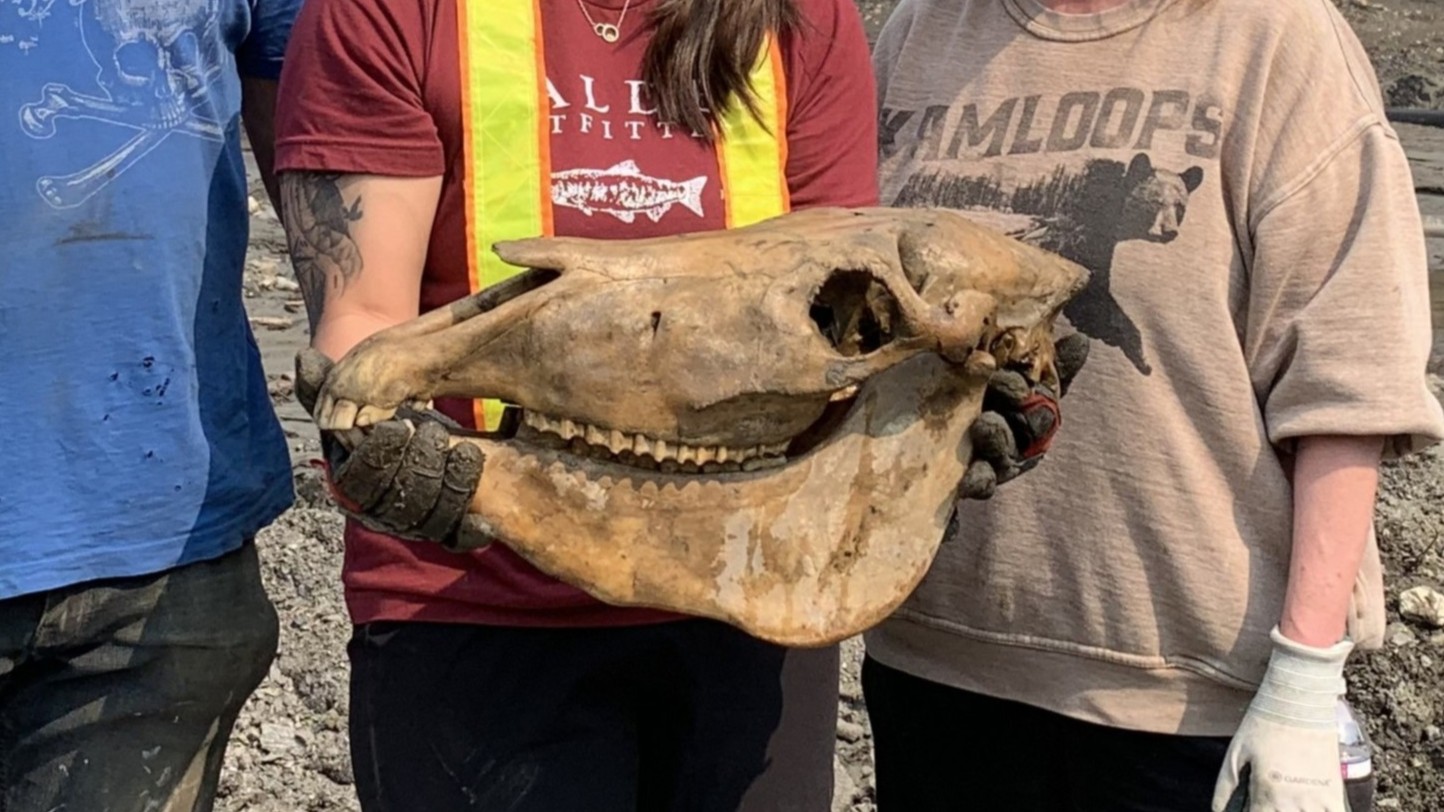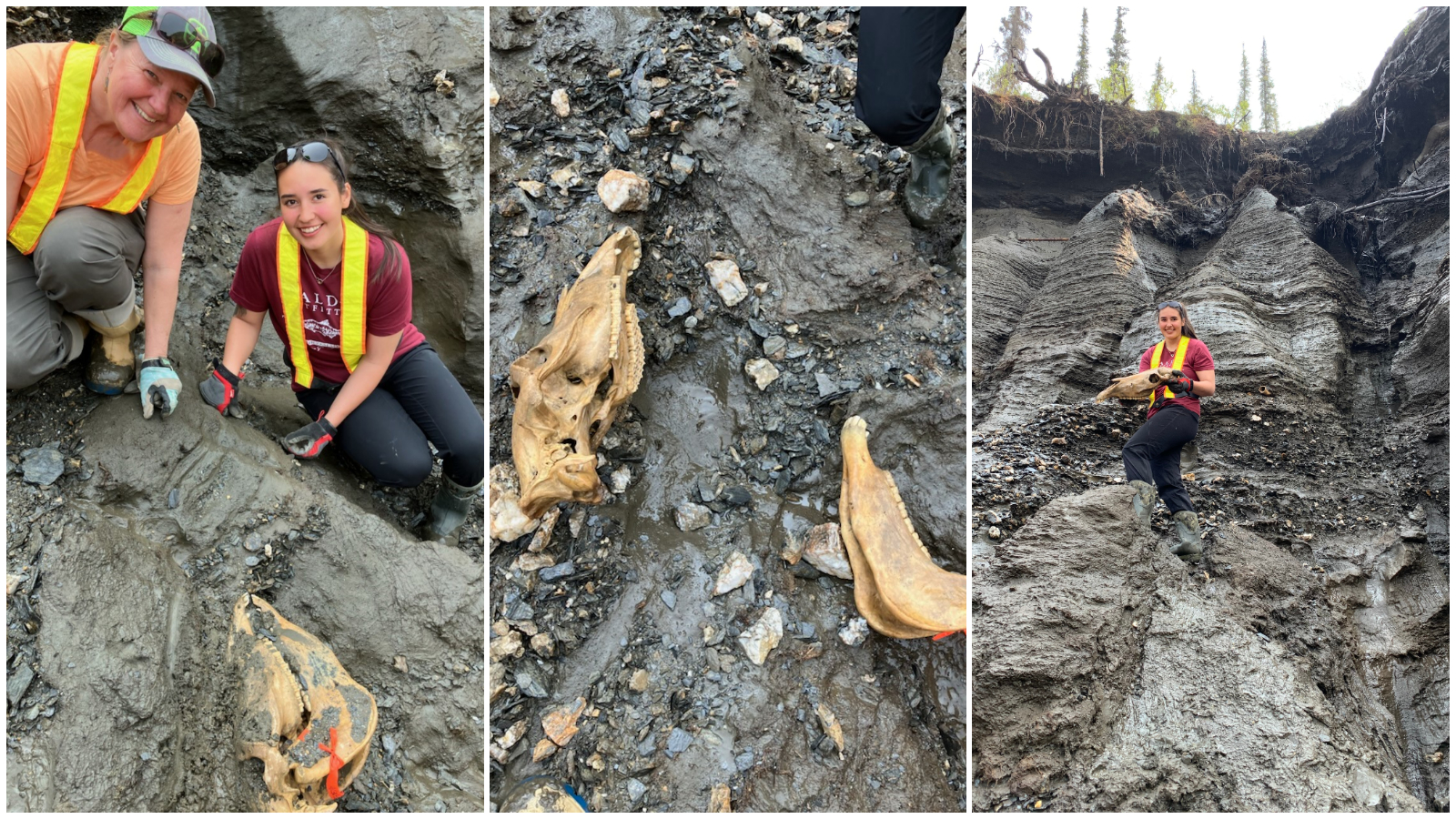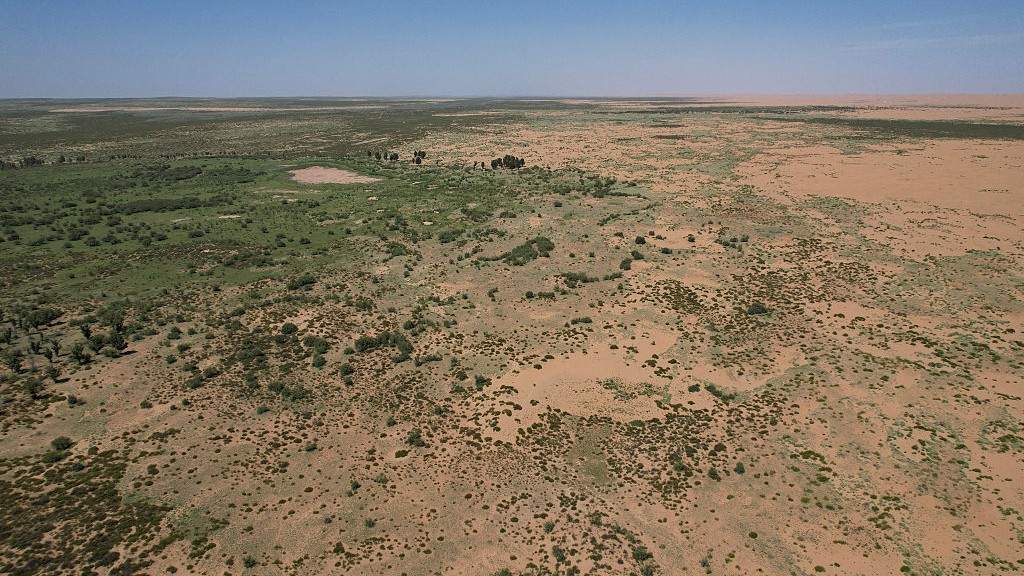'Beautifully preserved' ice age horse skull unearthed in Yukon mine
New pictures taken in Yukon, Canada, show a perfectly preserved fossil skull, which experts say belonged to a male, teenage horse that lived during the last ice age.

Researchers have pulled the perfectly-preserved skull of an ice age horse from a mine in Yukon, Canada, new pictures show.
Based on the soil around the skull and the depth of sediments where it was found, experts estimate that the horse lived about 30,000 years ago — but more precise radiocarbon dating could narrow this down, a spokesperson for the Yukon Paleontology Program said.
Scientists have identified more than 50 ice age horse species to date, but it remains unclear which one the skull belongs to. Horses that lived in what is now Yukon during the last ice age (2.6 million to 11,700 years ago) were relatively small, standing about 4 feet (1.2 meters) tall at the shoulders, Cameron Webber quoted experts as saying in an email to Live Science.

"While the physical characteristics of the skull and the size and shape of the teeth can provide clues to its evolutionary history, the specific species of this horse cannot be identified without more in-depth genetic information," Webber said. "Ancient DNA analysis will be needed if an accurate species identification for this find is desired."
Related: 'I knew they were something special': New York homeowner discovers mastodon jaw fossils in backyard
Researchers found the skull in a mine in the Klondike, a region in western Yukon. Only parts of the lower jaw and upper skull were initially visible above the mine's frozen ground, so the team returned the next day with more tools and water to melt the skull out, representatives of the Yukon Beringia Interpretive Center, a museum in Whitehorse, Canada, wrote in a Facebook post.
Miners helped the researchers extract the "beautifully preserved" skull by directing their water hoses over the skull, the representatives wrote.
Get the world’s most fascinating discoveries delivered straight to your inbox.
"What emerged was a complete horse skull," they wrote. "The presence of canines tells us this horse was likely male, and because they were only partially erupted, we know he was likely a teenager when he died."
It is unclear whether researchers will date the skull and analyze its DNA to determine the species.
Horses lived in North America between about 50 million and 11,000 years ago, when they went locally extinct. Europeans reintroduced horses following the 15th century, and the animals rapidly spread throughout the continent.
Last ice age quiz: How much do you know about Earth's frosty past?

Sascha is a U.K.-based staff writer at Live Science. She holds a bachelor’s degree in biology from the University of Southampton in England and a master’s degree in science communication from Imperial College London. Her work has appeared in The Guardian and the health website Zoe. Besides writing, she enjoys playing tennis, bread-making and browsing second-hand shops for hidden gems.
You must confirm your public display name before commenting
Please logout and then login again, you will then be prompted to enter your display name.
